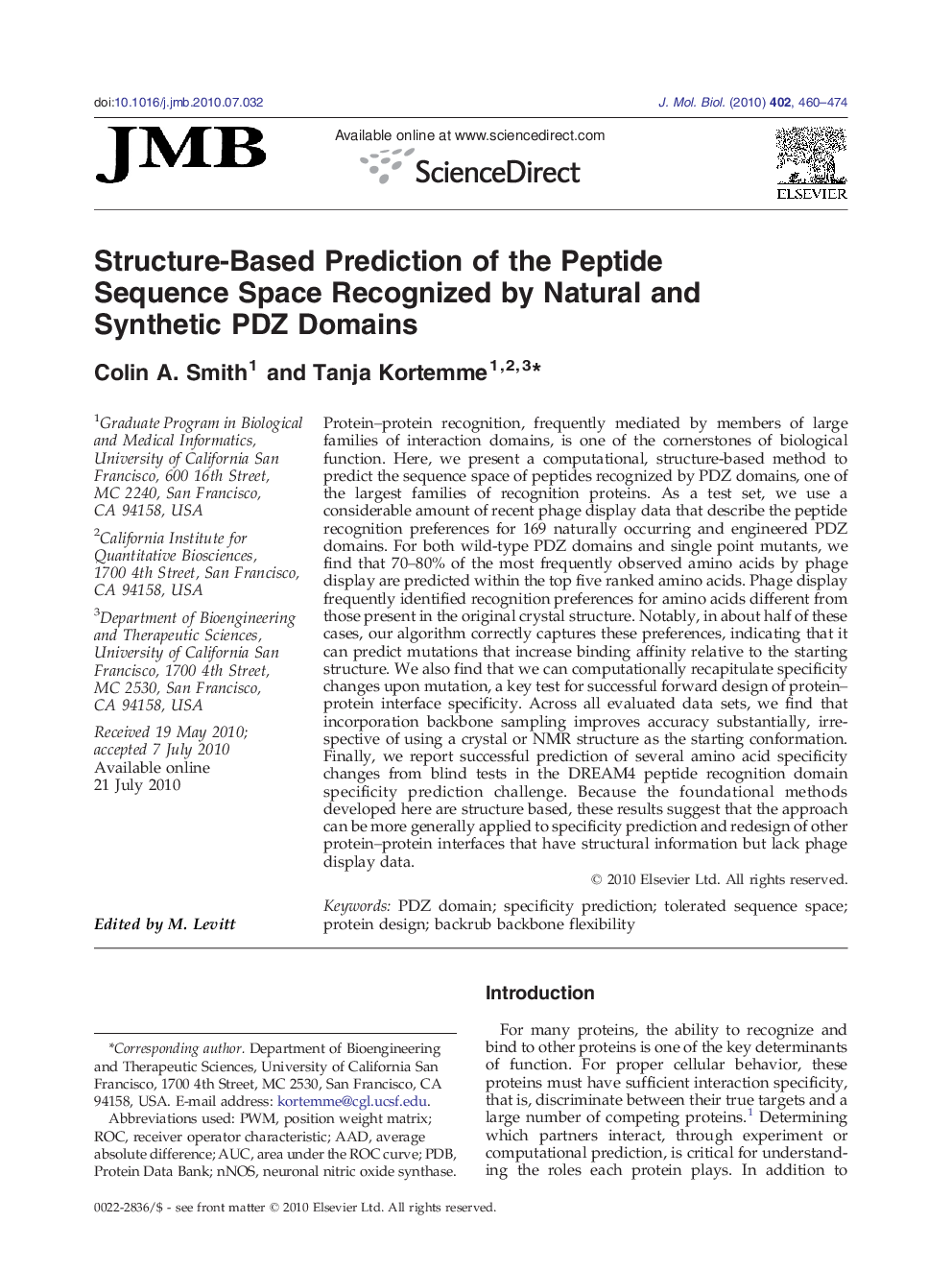| کد مقاله | کد نشریه | سال انتشار | مقاله انگلیسی | نسخه تمام متن |
|---|---|---|---|---|
| 2185875 | 1096020 | 2010 | 15 صفحه PDF | دانلود رایگان |

Protein–protein recognition, frequently mediated by members of large families of interaction domains, is one of the cornerstones of biological function. Here, we present a computational, structure-based method to predict the sequence space of peptides recognized by PDZ domains, one of the largest families of recognition proteins. As a test set, we use a considerable amount of recent phage display data that describe the peptide recognition preferences for 169 naturally occurring and engineered PDZ domains. For both wild-type PDZ domains and single point mutants, we find that 70–80% of the most frequently observed amino acids by phage display are predicted within the top five ranked amino acids. Phage display frequently identified recognition preferences for amino acids different from those present in the original crystal structure. Notably, in about half of these cases, our algorithm correctly captures these preferences, indicating that it can predict mutations that increase binding affinity relative to the starting structure. We also find that we can computationally recapitulate specificity changes upon mutation, a key test for successful forward design of protein–protein interface specificity. Across all evaluated data sets, we find that incorporation backbone sampling improves accuracy substantially, irrespective of using a crystal or NMR structure as the starting conformation. Finally, we report successful prediction of several amino acid specificity changes from blind tests in the DREAM4 peptide recognition domain specificity prediction challenge. Because the foundational methods developed here are structure based, these results suggest that the approach can be more generally applied to specificity prediction and redesign of other protein–protein interfaces that have structural information but lack phage display data.
Journal: Journal of Molecular Biology - Volume 402, Issue 2, 17 September 2010, Pages 460–474